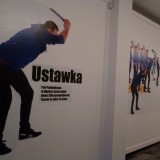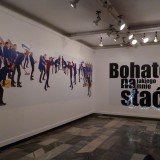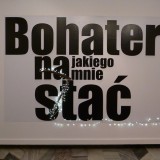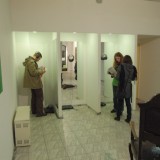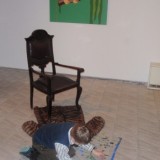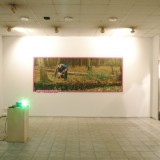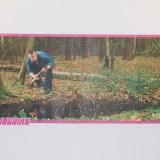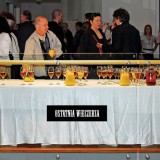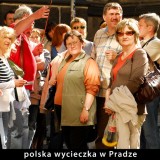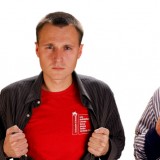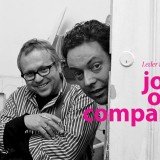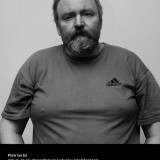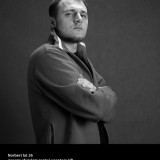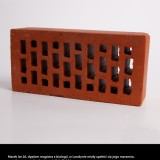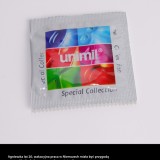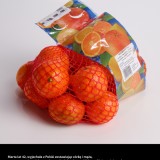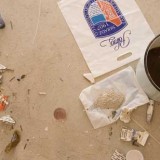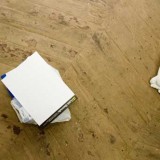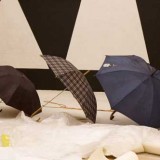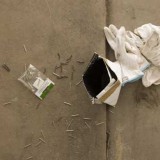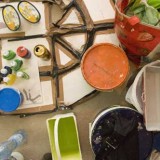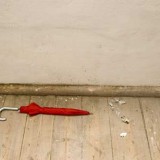Norbert Trzeciak
Norbert Trzeciak, born in 1981 in £ód¼. He graduated from the Artistic High School in £ód¼ and from the Graphics and Painting Department of the Academy of Fine Arts in £ód¼. In his work he focuses on photography, painting and computer graphics, including graphic design. He has also created video art and won the 23rd and 24th W³adys³aw Strzemiński competition (in 2006 and 2007). He was exhibited in Poland and a few times abroad.
In his art Norbert Trzeciak refers to contemporary events, promotional and mass media mechanisms and the history which shapes both our personality and group or national identity. The artist uses irony and sometimes provocation. He tries to contrast his life and reality with what he has learned from history or art history lessons and what he has heard in mass media and advertising campaigns. Many of Norbert Trzeciak’s works emerge out of photography. The artist uses a particular sense of observation and the ability to catch a moment, for example a facial expression or gesture. He is also able to notice an oddity or a second layer in an apparently banal situation.
It’s worth mentioning a series entitled The Artists of the £ód¼ Biennale (2006). It is a kind of a quasi-documentation from an artistic event. Each shot presents the physical preparations of artists participating in the exhibition entitled Mentality. On the photos between various glues, paints and strips of wood, one may recognise the feet of Agata Michowska’s sculpture or a cardboard Chinese man from the £ód¼ Kaliska group installation laying down on the floor. Trzeciak composed the shots in such a way as that on the whole the viewer may have the impression of an abstract composition or a still-life. It’s photography which is close to painting or graphics, but not through a visual means, but rather through the conscious choice to frame a fragment of reality.
During the 23rd edition of The W³adys³aw Strzemiński competition he showed a series of photos of objects resembling advertising images of products. There were three photos – one with a condom, one with a brick and a third with a package of oranges. A passive reception of the images was disturbed by comments which appeared under each photo – for example under the condom there appeared a sentence about a girl who travelled abroad to get a job and ended up in a public house. Under the photo of a brick the artist outlined the case of a biology MA who works on a construction site abroad. The subtitles sound like quotations from newspapers. It brings to mind the so called pop-banal art started on the Polish art scene by the £adnie Group and Trzeciak creates his artworks in this manner.
During the same exhibition the artist showed 2 black and white photos, which a section of the viewers may consider provocative. On one of them an older man regrets that he did not report his colleagues from Solidarity to the secret services, on the other – the artist himself, (at the time of Solidarity too young to report even the theft of candy in kindergarten) informs, that he has always wanted to become a security agent. It is an artwork which is an excellent comment upon the vetting paranoia in Poland, the obsessive chasing of ex-agents often by those who were invigilated themselves.
Subsequent works Trzeciak connect two elements within his previous works – connecting “reporter’s” photography, which catches the moment with the use of text comments. It makes his works aesthetically close to advertising billboards. For the exhibition Art after Hours about the situation of art school graduates in Poland, he prepared the work Join our company. The photo shows Dominik Lejman and Wojciech Leder who are well known artists and art school teachers, smiling at the viewer. They have both found their place within the mechanisms of the art world, which younger artists are starting to confront. Young artists are often left to themselves, to their own power and will to survive. In the same style are also the works Polish Tourist Group in Prague (2009) and The Last Supper (2011). In the first one, participants of the tour pose for the photo. These are people who differ from each other in how they look, dress and what age they are. They are random in every aspect, but at the same time they present members of the average Polish society.
The Last Supper shows a banquet after the opening of ms2, a branch of the Art Museum in £ód¼. A long table covered with white cloth in the centre of the photo with people around the table suggests associations with the popular motive of the last supper often present throughout the history of painting. Although the reception was a part of the inauguration, maybe the photo of these specific people together could have been taken for the last time.
During the exhibition Hunting in the Fokus £ód¼ Biennale Club (2010) he referred to the once popular “male” topic often found throughout the history of painting – hunting scenes. Trzeciak treated painting as a starting point for this project, but he developed the subject by the use of photography, video, audio art, objects and interactive work. Part of the exhibition included video and a photo-wallpaper placed on opposite walls. The video showed a forest and was shot with a hand held camera. The photo wallpaper presented a young man lurking with a rifle against the background of the forest. The man concentrated his look on something, but we are unable to see his goal from our perspective. The place designed for the viewer was in the space between photography and video. Are we the artist’s goal or his target? The exhibition Hunting endeavoured to engage more with the intellect of a viewer rather than on his/her emotions. The artist is interested in the relationship between the structure of the message and its reception. A pink frame with the words: “While hunting” around the photo of a man with a rifle, is not only an ornamental feature, which the artist may have incorrectly picked to add to the character of the photo and which disturbs our viewing of it. The frame brings associations with graphic elements used for example in the titles of TV programs or computer games. Thanks to it we realise that the hunting is virtual, that is only a certain convention or fiction, just like art. If someone watching the exhibition expected to experience a substitute for the experience of a real hunter, he/she was probably disappointed as Trzeciak reveals how the substitutes are constructed.
In the exhibition in the Ba³ucka Gallery entitled A hero that I can afford, the artist asked the question as to who the “hero” from the title was and analysed the topic with regard to the historical and contemporary perspective. He relates also the image of a hero to the notion of a fight, mainly a physical one. The first room of the gallery was filled with large scale photos, on which against a white background, groups of men not only with knives but also buckets, mops and other absurd tools, charge at each other. The male figures are multiplied images of the artist himself. The artist comments on it as follows: “The direct inspiration for these works were new reports in the media about the fixed fights of football fans. Various types of “arms” were listed, among others for example a fork… I was as shocked as amused. I thought about the hopelessness of this situation, because this time a man died there. Probably he was not killed with a fork, but maybe with a large hammer. So, hammer versus fork, my imagination started to work.” Within the exhibition the artist also recalls positive heroes, for example the shipyard workers and with his movie Forging the scythes he referred to the anniversary of the January Uprising (1863). The title refers to a print from the nineteenth century by Artur Grottger, who made a series of drawings presenting scenes from the January Uprising in 1863. In Trzeciak’s movie we see a party with a lot of alcohol in the artist’s studio which ends up with a fight. The artist seems to ask how much of a fighting strategy was there in our national uprisings and how much of it was quarrelsomeness with a jest of romantic vision about the world. The notion of a “hero” includes the essence of features considered male and is associated with a fight. It is a pattern on which extremely negative stances may grow – such as Nazism or just a random fight with “strangers”. As the artist sums up: One may fight with the fans of another football team or during street protests just like once against ZOMO, one may fight for one’s Fatherland… But the basis of all settlements by force is the fighting instinct, these are primitive reactions.
Norbert Trzeciak is an artist who not only develops his works formally but also develops the surrounding area of his interests in art. Similar to the case of other young artists, he started with a response to the style of advertising and by commenting surrounding reality, but in his newest works he deepens his reflection on reality, reaching historical, cultural and the contexts of artistic heritage, which may bring interesting results in his subsequent artistic output.
Anka Le¶niak


